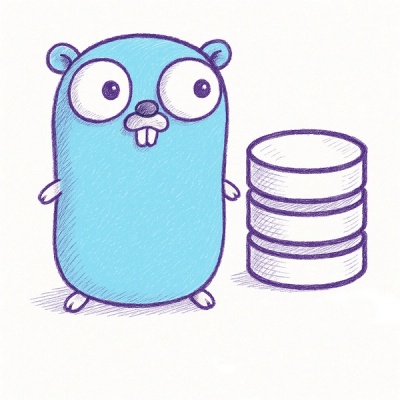
Security News
Browserslist-rs Gets Major Refactor, Cutting Binary Size by Over 1MB
Browserslist-rs now uses static data to reduce binary size by over 1MB, improving memory use and performance for Rust-based frontend tools.
chain-db-ts
Advanced tools
A TypeScript / JavaScript client for Chain DB, a secure database system with built-in history tracking, offering AES-256-GCM encryption, atomic operations with rollback capability, and automatic backups.
npm install chain-db-ts
# or
yarn add chain-db-ts
import { connect } from 'chain-db-ts'
// Connect to Chain DB
// Parameters: server | database | user | password
// If the server parameter is null, "http://localhost:2818" will be used as default
const db = await connect({
server: 'http://localhost:2818',
database: 'my-database',
user: 'root',
password: '1234',
})
Define your table structure using TypeScript interfaces:
// Define your table structure
interface GreetingTable {
greeting: string
}
// Define a more complex table
interface UserTable {
id: number
name: string
email: string
active: boolean
createdAt: string
}
// Get a table instance
// If the table already exists in the chain, its data will be loaded. (data from the last record stored in the table)
const greetingTable = await db.getTable<GreetingTable>('greeting')
// Access the current document data (the last record stored in the table)
console.log(greetingTable.currentDoc) // e.g., { greeting: 'Hello' }
// Modify the current document data
greetingTable.currentDoc.greeting = 'Hello, Chain DB!'
// Persist changes to database (creates a new record with a new doc_id)
const result = await greetingTable.persist()
// The persist method returns the created document with its doc_id
console.log(result.doc_id) // e.g., '550e8400-e29b-41d4-a716-446655440000'
// You can also access the current document's ID directly
const currentDocId = greetingTable.getCurrentDocId()
console.log(currentDocId) // Same as result.doc_id
// To update a specific document, first get it by ID
const docId = '550e8400-e29b-41d4-a716-446655440000'
const specificDoc = await greetingTable.getDoc(docId)
// Then update its data
specificDoc.doc.greeting = 'Updated greeting'
await specificDoc.update()
// Get a specific document by its ID (assuming we know a document ID)
// The document ID is generated by ChainDB when data is persisted
const docId = '550e8400-e29b-41d4-a716-446655440000' // Example ID
const specificDoc = await greetingTable.getDoc(docId)
// Access the document data
console.log(specificDoc.doc) // e.g., { greeting: 'Hello from specific doc', doc_id: '550e8400-e29b-41d4-a716-446655440000' }
// The doc_id is also available directly in the document object
console.log(specificDoc.doc.doc_id) // '550e8400-e29b-41d4-a716-446655440000'
// Update the specific document
specificDoc.doc.greeting = 'Updated greeting for specific doc'
await specificDoc.update() // Updates only this specific document
// Refetch the document data if it might have been updated elsewhere
await specificDoc.refetch()
console.log(specificDoc.doc) // Updated data from the database
// Get the table name this document belongs to
const tableName = specificDoc.getTableName() // 'greeting'
Note: The TableDoc instance returned by getDoc() is a simplified version of a table that only allows updating the specific document. It cannot create new records with persist() or perform other table operations.
// Get the last 100 changes to the table
const history = await greetingTable.getHistory(100)
console.log(history)
// Example output:
// [
// { greeting: 'Hello, Chain DB!' },
// { greeting: 'Hello' },
// { greeting: 'Hi there' },
// ...
// ]
Chain DB supports real-time updates through WebSockets. You can subscribe to table events to get notified when data changes:
import { EventTypes, EventData } from 'chain-db-ts'
// Subscribe to table update events
db.events().subscribe(EventTypes.TABLE_UPDATE, (eventData: EventData) => {
console.log('Table updated:', eventData.table)
console.log('New data:', eventData.data)
})
// Subscribe to new data persistence events
db.events().subscribe(EventTypes.TABLE_PERSIST, (eventData: EventData) => {
console.log('New data added to table:', eventData.table)
console.log('Data:', eventData.data)
})
// Unsubscribe from an event
const myCallback = (eventData: EventData) => {
// Handle event
}
db.events().subscribe(EventTypes.TABLE_UPDATE, myCallback)
// Later, when you want to unsubscribe:
db.events().unsubscribe(EventTypes.TABLE_UPDATE, myCallback)
// Close WebSocket connection when done
db.events().closeEvents()
The EventData object contains:
event_type: The type of event (TableUpdate, TablePersist)database: The database nametable: The table namedata: The data associated with the eventtimestamp: When the event occurred// Find items with exact matches
const users = await userTable.findWhere(
{ active: true, name: 'John' }, // criteria
10, // limit (default: 1000)
true // reverse order (default: true)
)
import { Operators } from 'chain-db-ts'
// Find items with advanced criteria
const users = await userTable.findWhereAdvanced(
[
{
field: 'name',
operator: Operators.CONTAINS,
value: 'John',
},
{
field: 'age',
operator: Operators.GREATER_THAN,
value: 25,
},
],
10, // limit
true // reverse order
)
Available operators:
EQUAL (==)NOT_EQUAL (!=)GREATER_THAN (>)GREATER_THAN_OR_EQUAL (>=)LESS_THAN (<)LESS_THAN_OR_EQUAL (<=)CONTAINS (for strings and arrays)STARTS_WITH (for strings)ENDS_WITH (for strings)// Check if a table is empty
const isEmpty = greetingTable.isEmpty()
// Get the table name
const tableName = greetingTable.getName()
// Refetch the table data from the database
await greetingTable.refetch()
import { connect, EventTypes, EventData } from 'chain-db-ts'
// Define table structure
interface GreetingTable {
greeting: string
}
async function main() {
// Connect to Chain DB
const db = await connect({
server: 'http://localhost:2818',
database: 'test-db',
user: 'root',
password: '1234',
})
// Get the "greeting" table
const greetingTable = await db.getTable<GreetingTable>('greeting')
console.log(greetingTable.currentDoc) // e.g., { greeting: 'Hi' }
// Subscribe to table update events
db.events().subscribe(EventTypes.TABLE_UPDATE, (eventData: EventData) => {
if (eventData.table === 'greeting') {
console.log('Greeting table updated:', eventData.data)
}
})
// Modify and persist data
greetingTable.currentDoc.greeting = 'Hello my dear!'
const persistResult = await greetingTable.persist() // Data is persisted on database
// Get the doc_id of the newly created document
console.log('New document ID:', persistResult.doc_id)
// You can also get the current document ID directly from the table
const currentDocId = greetingTable.getCurrentDocId()
console.log('Current document ID:', currentDocId)
// See the updated values
console.log(greetingTable.currentDoc) // { greeting: 'Hello my dear!', doc_id: '...' }
// Get a specific document by its ID
// We can use the ID we just got from the persist operation
const specificDoc = await greetingTable.getDoc(currentDocId)
// Access the document data and ID
console.log(specificDoc.doc) // { greeting: 'Hello my dear!', doc_id: '...' }
console.log(specificDoc.doc.doc_id) // Same as currentDocId
// Update a specific document
specificDoc.doc.greeting = 'Updated specific document'
await specificDoc.update() // Updates only this specific document
// Refetch the document to get the latest data
await specificDoc.refetch()
console.log(specificDoc.doc) // Latest data from the database
// Get the last 100 changes
const greetingHistory = await greetingTable.getHistory(100)
console.log(greetingHistory)
// [
// { greeting: 'Updated specific document' },
// { greeting: 'Hello my dear!' },
// { greeting: 'Hi' },
// ...
// ]
// Close WebSocket connection when done
db.events().closeEvents()
}
main().catch(console.error)
MIT
[1.0.0-rc.3] - 2025-03-11
getCurrentDocId() method.FAQs
Chain DB Client for Javascript/Typescript Node apps.
The npm package chain-db-ts receives a total of 6 weekly downloads. As such, chain-db-ts popularity was classified as not popular.
We found that chain-db-ts demonstrated a healthy version release cadence and project activity because the last version was released less than a year ago. It has 0 open source maintainers collaborating on the project.
Did you know?

Socket for GitHub automatically highlights issues in each pull request and monitors the health of all your open source dependencies. Discover the contents of your packages and block harmful activity before you install or update your dependencies.

Security News
Browserslist-rs now uses static data to reduce binary size by over 1MB, improving memory use and performance for Rust-based frontend tools.

Research
Security News
Eight new malicious Firefox extensions impersonate games, steal OAuth tokens, hijack sessions, and exploit browser permissions to spy on users.

Security News
The official Go SDK for the Model Context Protocol is in development, with a stable, production-ready release expected by August 2025.